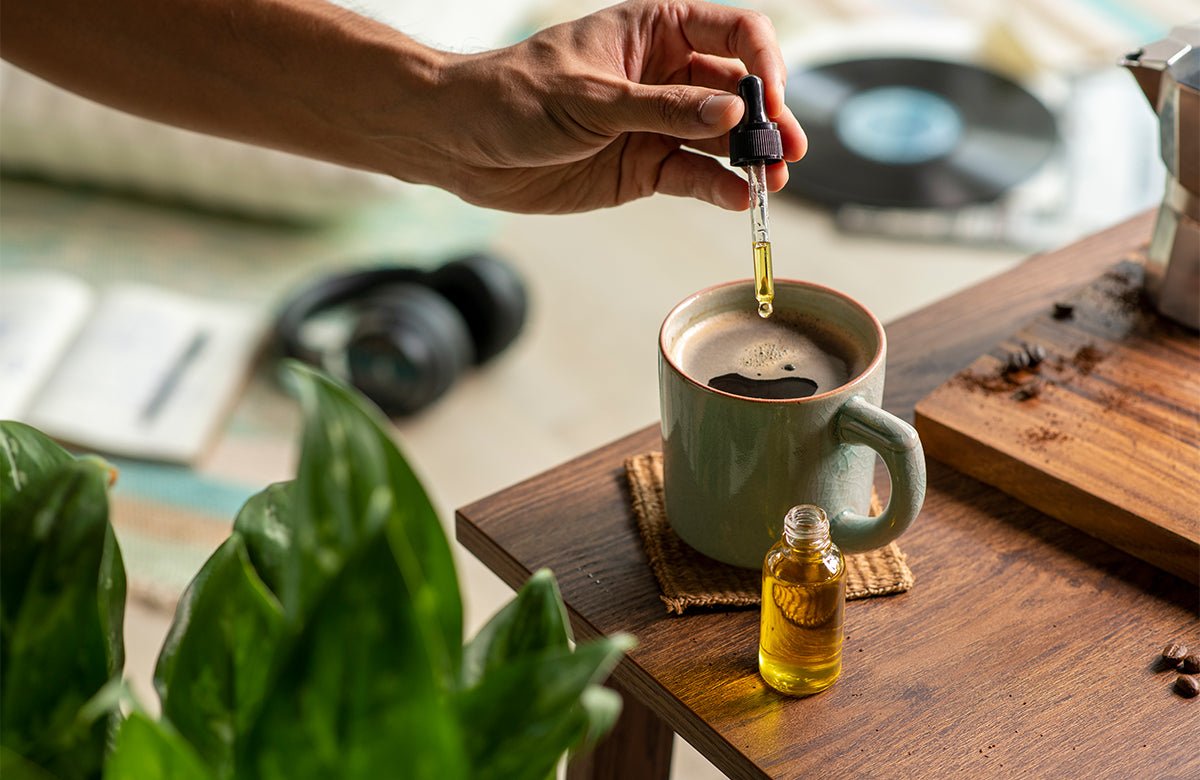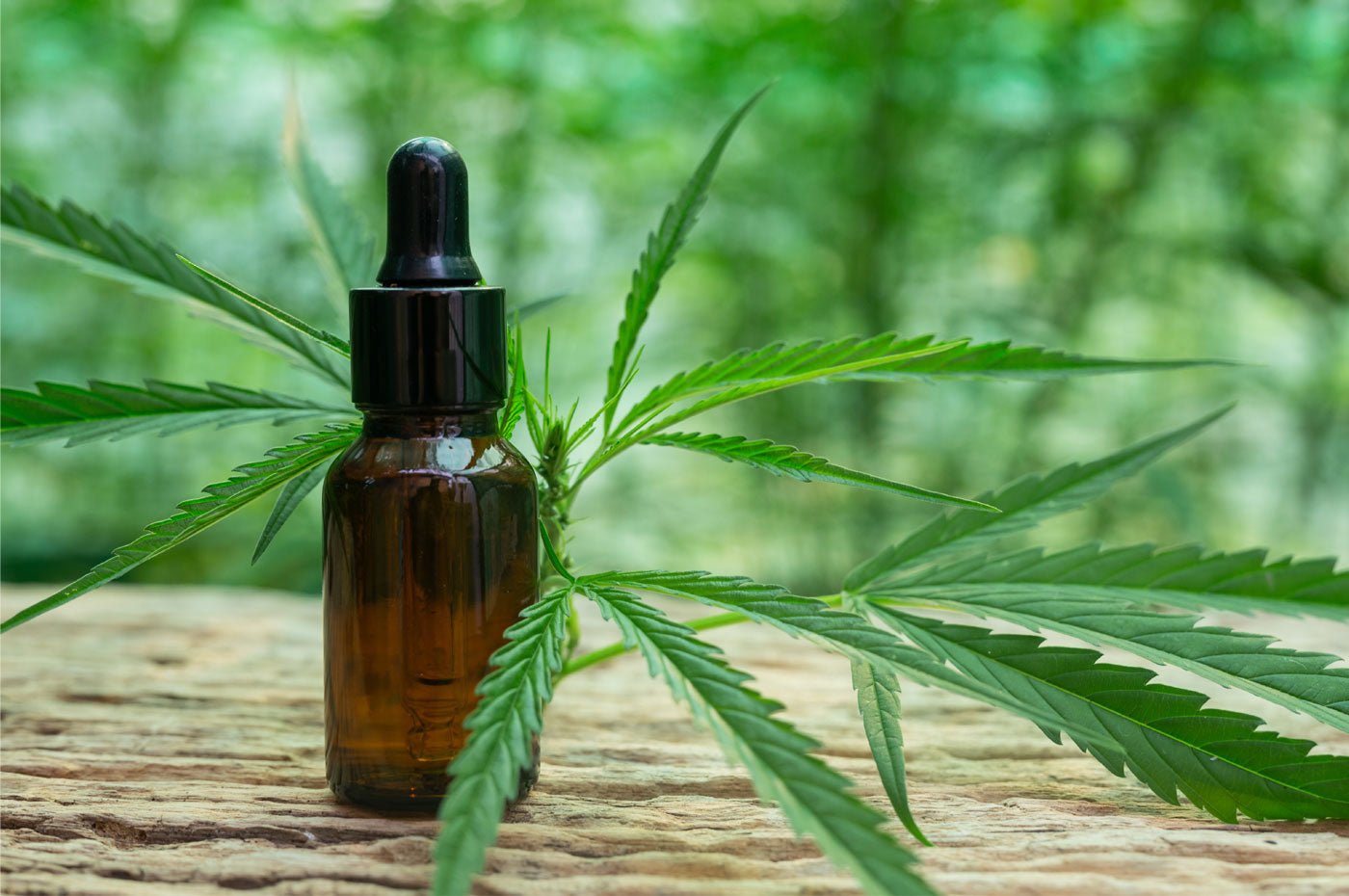CBD has emerged as a promising natural remedy for managing various health conditions, including osteoarthritis. This article aims to explain the basics of osteoarthritis, including its prevalence across different age groups, and the common signs and symptoms.
We will also explore how CBD, specifically Qurist's CBD oil, might provide relief in managing osteoarthritis. Studies conducted on animals have suggested that CBD has pain-relieving and anti-inflammatory properties, but these effects have not yet been validated in quality studies on humans.
However, some people with arthritis who have tried CBD report noticeable pain relief, improved sleep, and reduced anxiety. Nevertheless, it is important to note that like any medication for arthritis, CBD may not work for everyone.
With so many health solutions available, CBD has emerged as an intriguing option. As we delve into the intricacies of osteoarthritis, we'll explore the potential of this natural remedy. Join us for an easy-to-understand exploration of the basics, along with insights into how CBD may provide relief for those struggling with osteoarthritis.
Understanding Osteoarthritis: The Basics
Osteoarthritis is a type of arthritis that affects many people as they age. It occurs when the protective cartilage cushions the ends of bones and wears down over time. This can cause pain, stiffness, and limited movement in your hands, knees, hips, and spine.
This condition often develops gradually and primarily affects the joints in your hands, knees, hips, and spine. Osteoarthritis is more likely to occur as we age, but it can also result from joint injuries, obesity, and a family history of the condition.
Symptoms of osteoarthritis include joint pain, stiffness, and a reduced range of motion. Everyday activities, such as walking or climbing stairs, may become challenging. While osteoarthritis is a chronic condition with no cure, various treatments and lifestyle changes can help manage symptoms and improve the quality of life for those affected.
These may include medications, physical therapy, and in some cases, joint replacement surgery. Early diagnosis and proactive management are key to minimizing the impact of osteoarthritis on daily life.
Also Read : CBD Oil in India
Types of Osteoarthritis
There are two types of osteoarthritis:
Primary: Primary osteoarthritis is the most common type and develops gradually over time due to everyday wear and tear on your joints. Primary osteoarthritis happens when the cartilage in your joints gradually breaks down because of all the everyday movements we do.
While wear and tear may be an inevitable part of life, a proactive approach can influence how gracefully we navigate the journey. Engaging in joint-friendly exercises, maintaining a healthy weight, and adopting lifestyle practices that support joint health become valuable tools in the prevention toolkit.
Secondary: Unlike primary osteoarthritis, which comes from everyday wear and tear, secondary osteoarthritis is caused by something specific, like an injury or trauma to a joint. It's like a direct hit to the joint that sets off changes.
When a joint experiences a serious injury, like a bad fall or sports-related trauma, it can trigger changes in the joint over time. The injury sets the stage for osteoarthritis to develop, making the joint less smooth and causing discomfort. While primary osteoarthritis is a slow process, secondary osteoarthritis can happen more quickly.
The direct injury acts as a catalyst, speeding up the changes in the joint and leading to osteoarthritis sooner than the wear-and-tear process. Taking care of injuries properly and getting medical attention when needed can play a big role in preventing secondary osteoarthritis. It's like giving the joint the right treatment after an injury to minimize the chances of long-term joint changes.
While osteoarthritis is a natural part of aging and can't be reversed, there are ways to manage its symptoms and slow its progression. Staying active, maintaining a healthy weight, and receiving certain treatments can help improve joint function and reduce pain. Remember that your joints are crucial for daily activities, and taking care of them can make all the difference in enjoying an active and pain-free life.
Also Read : CBD in Pregnancy
Age Groups Affected in Osteoarthritis:
Navigating the landscape of osteoarthritis reveals that it often chooses the later chapters of life to make its presence known. Mostly seen in individuals aged 65 and above, this degenerative joint disease inclines making itself comfortable as the years add up.
Yet, don't be surprised if osteoarthritis decides to make an early cameo. It's not an exclusive guest for the elderly. Younger folks may find themselves grappling with its effects, particularly if they've faced joint injuries or carry a genetic predisposition to this joint-wearing condition. So, while it's more commonly a companion in the golden years, osteoarthritis can occasionally knock on the door of youth, adding a twist to the narrative of joint health.
Signs and Symptoms of Osteoarthritis:
A. Joint Pain and Stiffness:
Osteoarthritis has a knack for announcing its presence with a duo of discomfort - pain and stiffness. Picture waking up after a restful night's sleep; the joints, now stiff, protest a bit when you attempt to get moving.
This discomfort often lingers, making itself known after periods of inactivity, like when you stand up after a movie or get out of the car. The joints, usually silent partners in your daily activities, suddenly become vocal, reminding you of their wear and tear.
B. Reduced Range of Motion:
As osteoarthritis sets in, it slyly begins to limit your joint's range of motion. Imagine reaching for something on a high shelf or bending down to tie your shoelaces. In the early stages, these movements may not feel as smooth as they used to be.
Over time, as the condition progresses, you might find yourself facing a subtle resistance, a reminder that your joints are not as agile as they once were. It's like your body's way of saying, "Remember, I've been through a lot!"
C. Swelling:
Inflammation, a key player in the osteoarthritis orchestra, often brings swelling as its plus one. Your once-slender joints may take on a slightly puffier appearance, a visual cue that something is amiss within. It's like your body's protective response, attempting to cushion and support the joint as it grapples with the wear and tear. So, if you notice a bit of extra "fluffiness" around your joints, osteoarthritis might be the culprit behind the scenes.
D. Crunching Sensation:
Joint movement becomes a sensory experience as osteoarthritis progresses, introducing a peculiar sensation known as crepitus. Imagine the sound of footsteps on freshly fallen snow or the gentle rustling of leaves. Now, transpose that to the realm of joints.
The grating or crunching sensation during movement is like a subtle reminder that your joints are changing. While not necessarily painful, it's an audible cue that your joints are experiencing the effects of wear and tear, adding a unique soundtrack to your movements.
Is Osteoarthritis Manageable or Curable?
Osteoarthritis is a chronic condition, meaning it is generally not curable. However, its progression can be managed and controlled through lifestyle changes, physical therapy, and medications.
A. Management through Lifestyle Changes:
Take a moment to picture your daily routines – from the way you move to what you eat. Believe it or not, these simple aspects of life can play a starring role in managing osteoarthritis. Incorporating joint-friendly exercises, maintaining a healthy weight, and ensuring a well-balanced diet can be powerful tools in slowing down the progression of this joint wear and tear.
B. Management through Physical Therapy:
Physiotherapy includes targeted exercises and techniques that can help alleviate joint pain associated with osteoarthritis. These exercises are designed to strengthen the muscles around the affected joint, providing better support and reducing discomfort.
Physiotherapists work on enhancing joint flexibility and range of motion. Through specific exercises, they help you regain and maintain better mobility, making daily activities easier and less painful.
C. Management through Medications:
In the arsenal against osteoarthritis, medications can be the unsung heroes. Pain relievers and anti-inflammatory drugs may be prescribed to alleviate discomfort and manage inflammation. These medications aren't a cure, but they can be reliable companions in the journey to make living with osteoarthritis more manageable.
Osteoarthritis might not be curable, but it's certainly controllable. It's like navigating a winding road – with the right tools and strategies, you can smooth out the bumps and turns, making the journey more comfortable and manageable. So, remember, managing osteoarthritis is not a sprint; it's a marathon where small, consistent steps pave the way for a more joint-friendly life.
How does CBD help in managing Osteoarthritis?
CBD may aid in managing osteoarthritis through its interaction with the endocannabinoid system (ECS) and its anti-inflammatory properties. Here's a simplified explanation:
A. Anti-Inflammatory Action:
CBD is known for its ability to reduce inflammation. In osteoarthritis, inflammation in the joints is a significant factor contributing to pain and discomfort. CBD's anti-inflammatory properties may help alleviate these symptoms.
B. ECS Regulation:
CBD interacts with the ECS, a system in your body that helps regulate various functions, including immune response and inflammation. By working with the ECS, CBD may contribute to maintaining a better balance in the joints affected by osteoarthritis.
C. Pain Relief:
Osteoarthritis often involves joint pain. CBD may offer pain relief by interacting with receptors in the nervous system, influencing how the body perceives and responds to pain signals.
D. Improved Mobility:
CBD's anti-inflammatory and pain-relieving effects may contribute to improved joint mobility. By reducing inflammation and discomfort, CBD can make it easier for individuals with osteoarthritis to move more comfortably.
E. Non-Habit Forming Nature:
Unlike some conventional pain medications, CBD is not habit-forming. This makes it a potentially safer option for long-term use in managing chronic conditions like osteoarthritis.
F. Supports Overall Well-Being:
CBD's calming influence on the nervous system may also contribute to overall well-being. Managing the stress and anxiety associated with chronic conditions like osteoarthritis is essential, and CBD may play a role in promoting a sense of calm.
CBD’s Interaction With Other Medications:
CBD has gained popularity for its potential health benefits, but it's important to understand that it can interact with certain medications. This is because CBD can affect how certain meds are metabolized in your body. If you're thinking of trying CBD, it's important to have a conversation with your healthcare professional to ensure that it's safe for you to use.
Your healthcare professional is like the party planner of your health routine, making sure that all the elements work together harmoniously. They can help you determine if adding CBD to your routine is the right choice for you. It's especially important to consult with your healthcare professional if you take medications that have a "narrow therapeutic window." These medications require precise dosing to be effective, and CBD's influence could impact their effectiveness.
Conclusion
The use of CBD oil holds promise as a natural and potentially effective option for managing osteoarthritis. With its anti-inflammatory properties and interaction with the endocannabinoid system, CBD may provide relief from the pain, inflammation, and reduced mobility associated with this common joint condition.
As we navigate the landscape of osteoarthritis management, the non-habit-forming nature of CBD and its favorable side effect profile make it an appealing choice for those seeking alternatives to traditional pain medications. The potential for improved joint function, reduced inflammation, and an overall sense of well-being adds to the allure of incorporating CBD oil into an osteoarthritis care plan.
However, it's crucial to approach CBD use for osteoarthritis with informed discretion. Individual responses can vary, and consulting with a healthcare professional is advisable, especially for those with existing medical conditions or taking other medications.
As research on CBD and osteoarthritis continues to evolve, it opens avenues for exploring natural and holistic approaches to managing joint health. The synergy between CBD and the body's innate systems offers a potential pathway to a more comfortable and mobile life for individuals grappling with the challenges of osteoarthritis. In the quest for relief, CBD oil stands as a hopeful companion, offering a gentle and potentially effective alternative in the ongoing journey towards better joint health and overall well-being.





Leave a comment
This site is protected by hCaptcha and the hCaptcha Privacy Policy and Terms of Service apply.